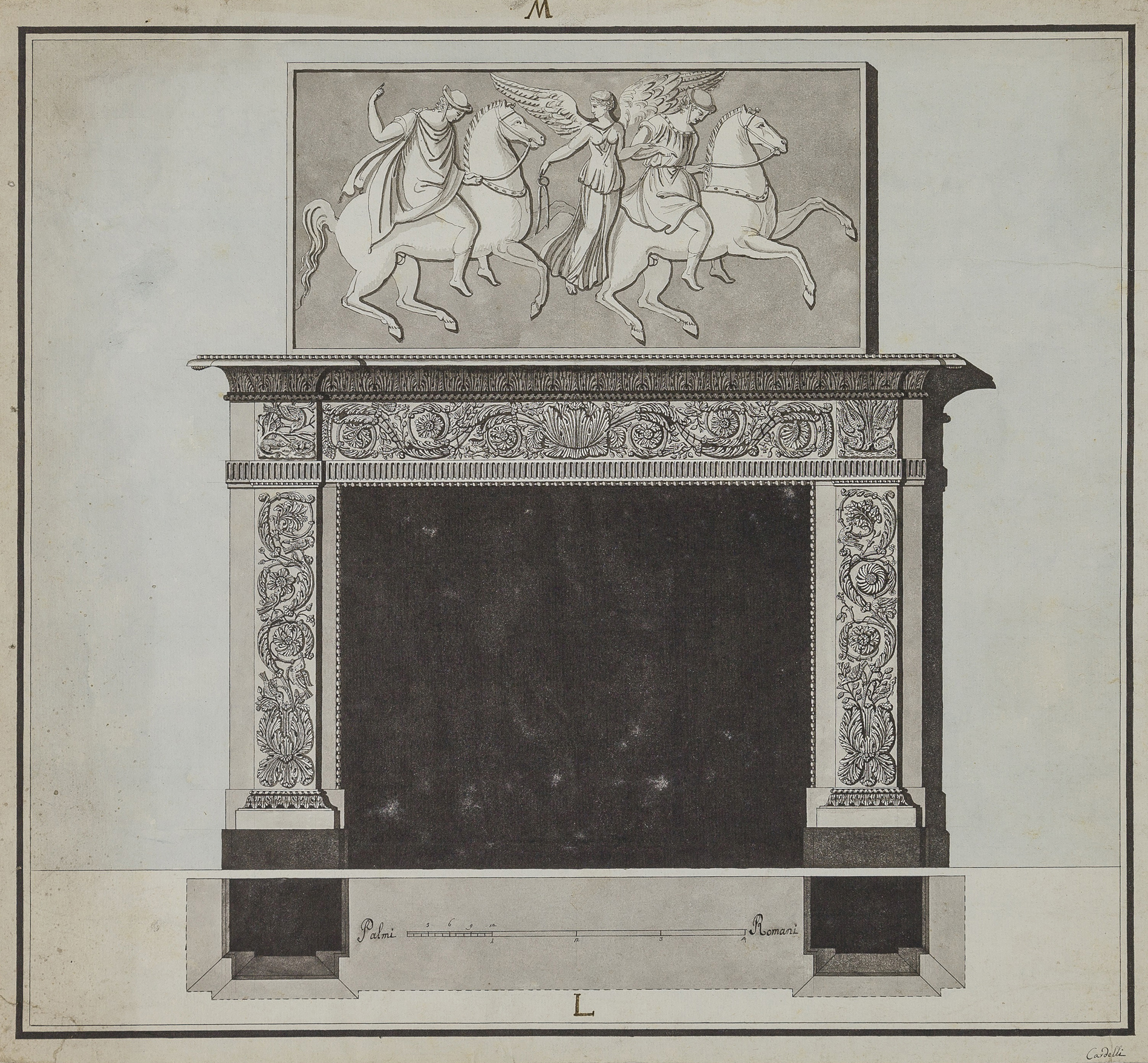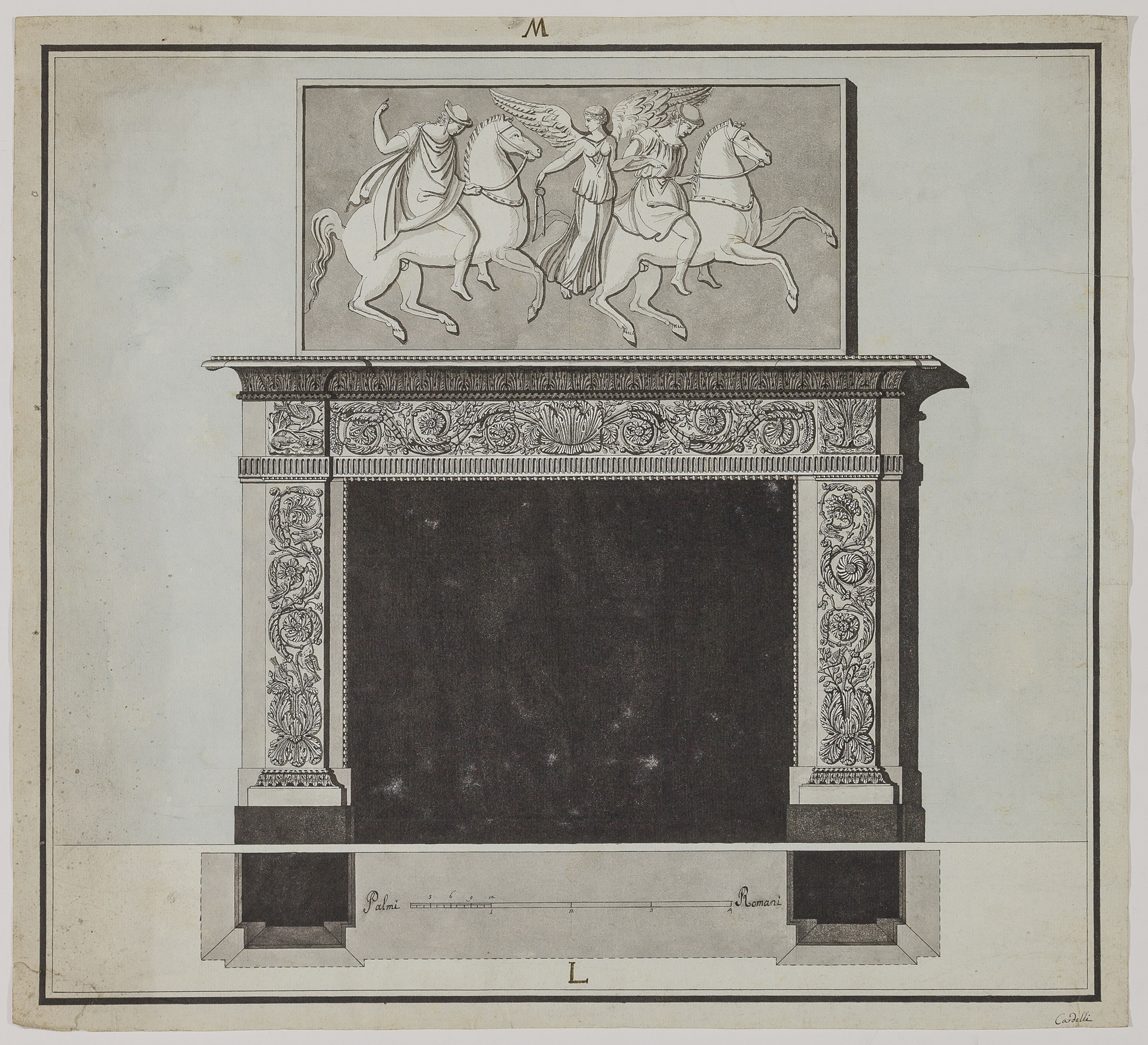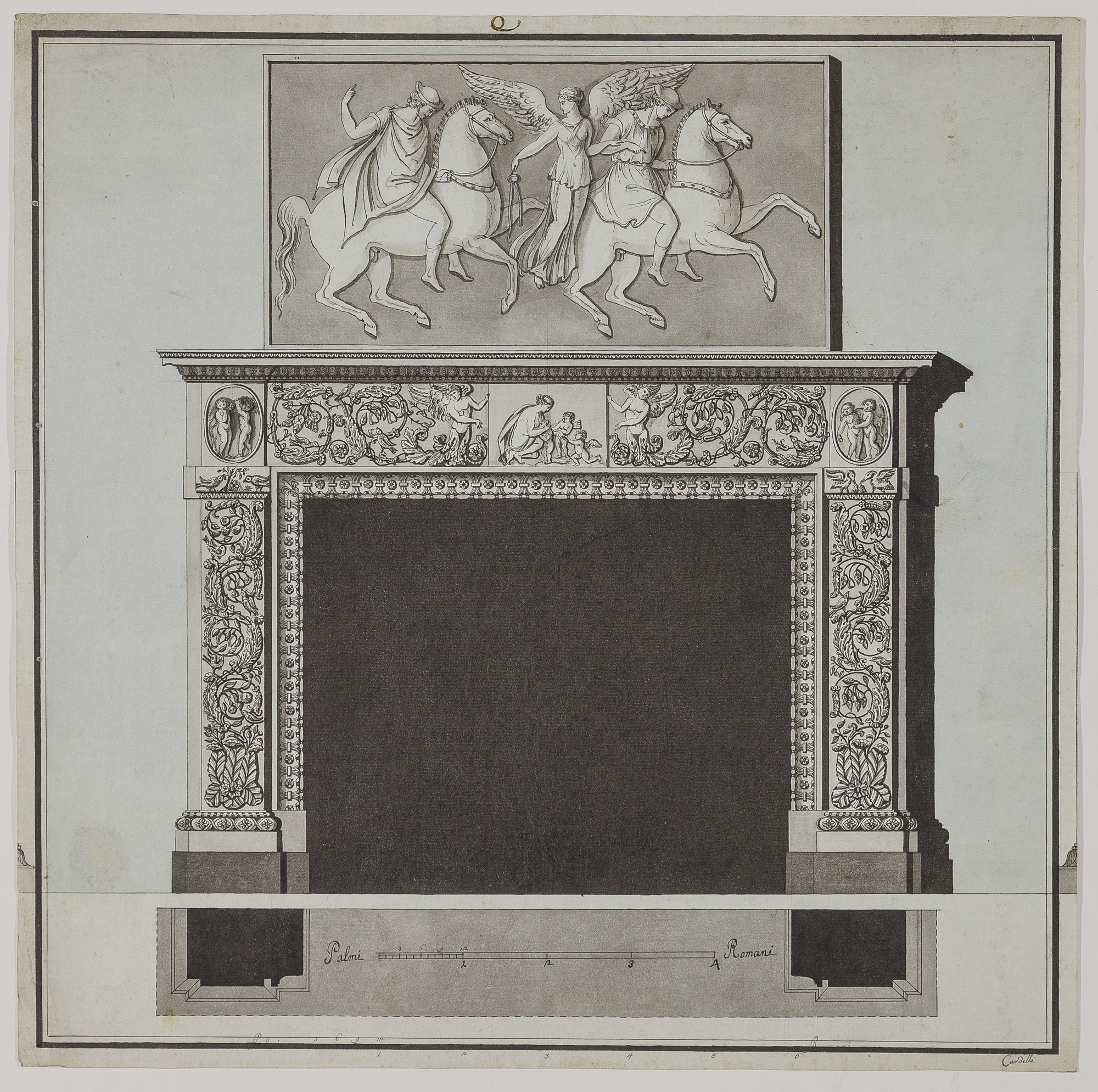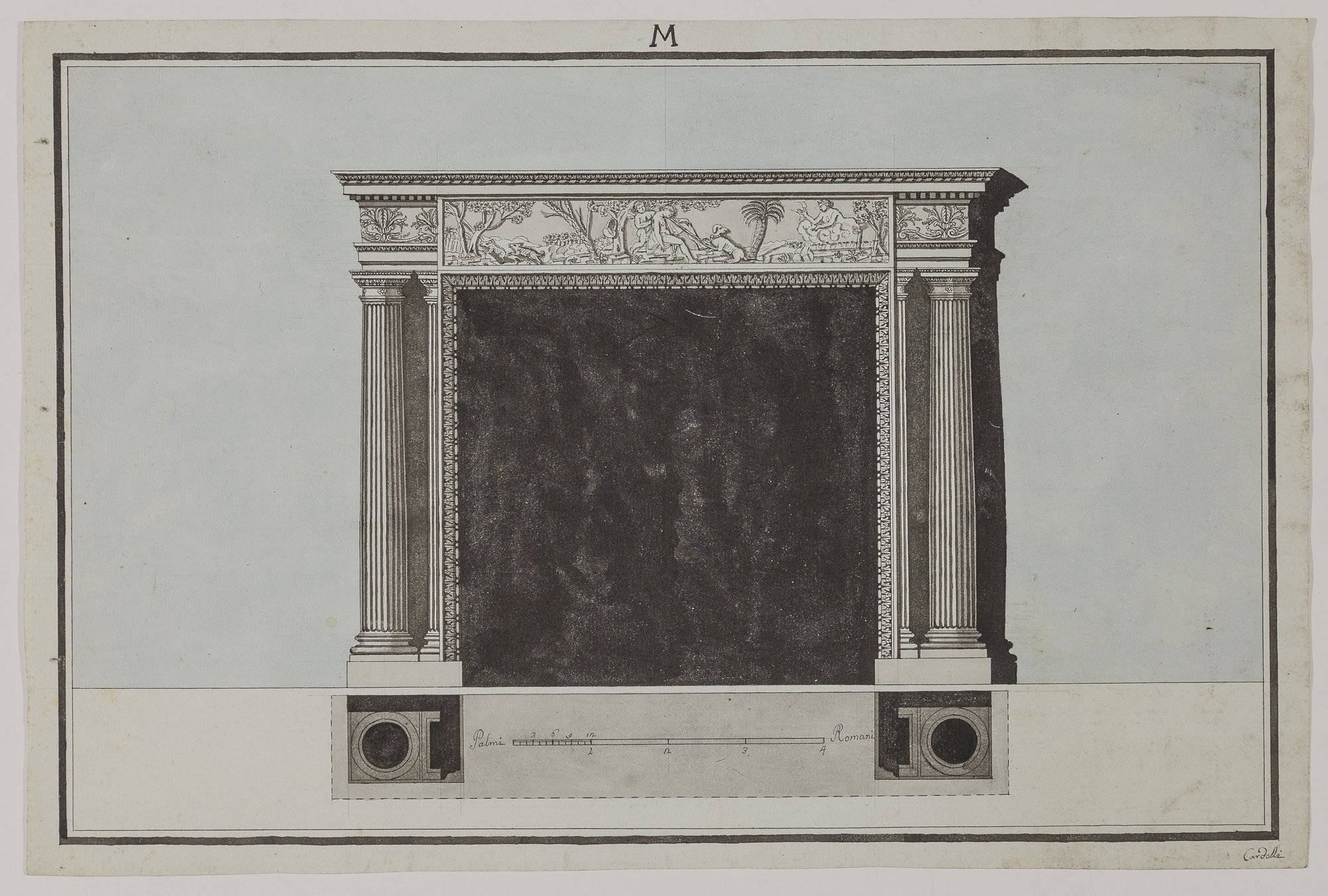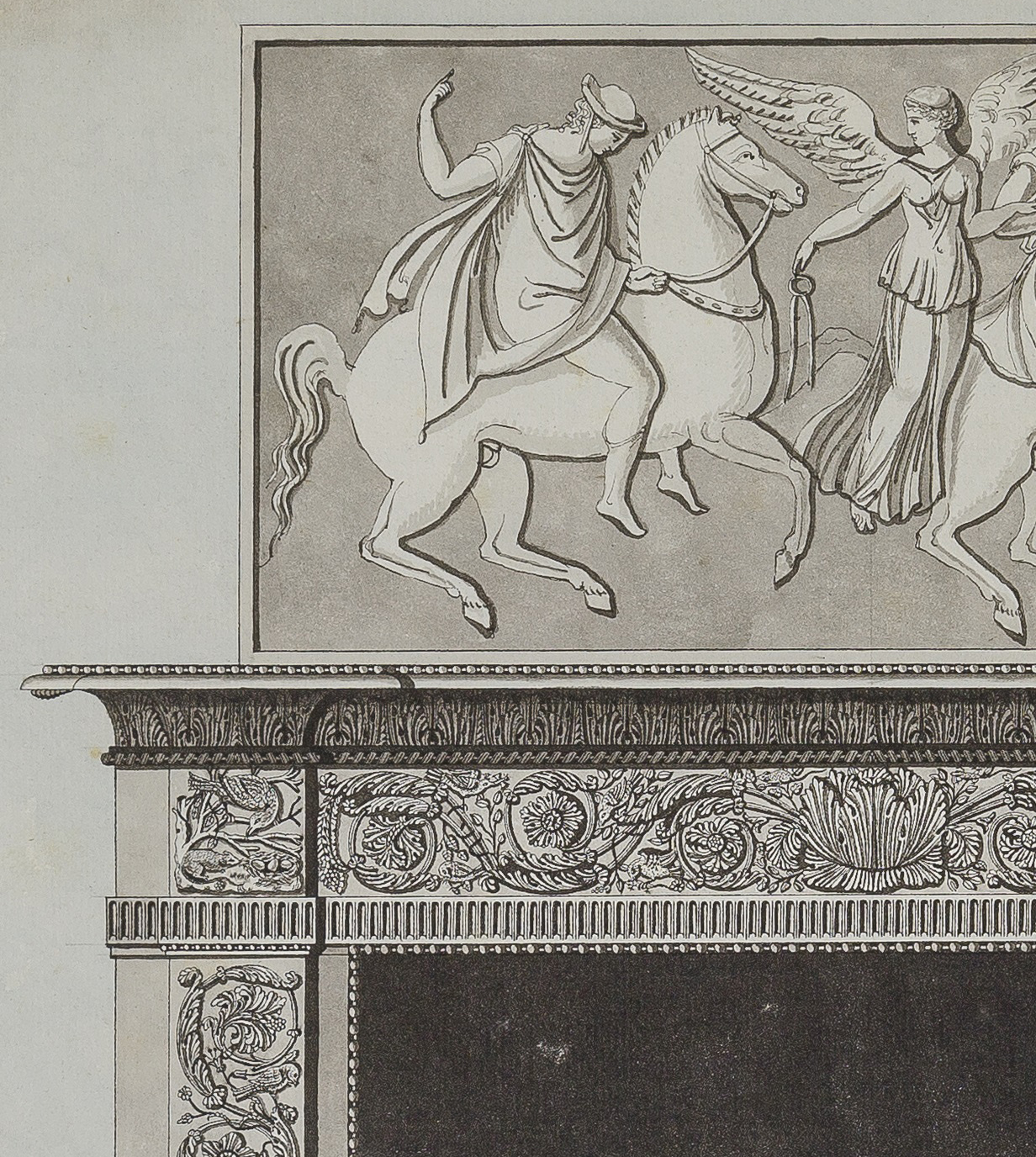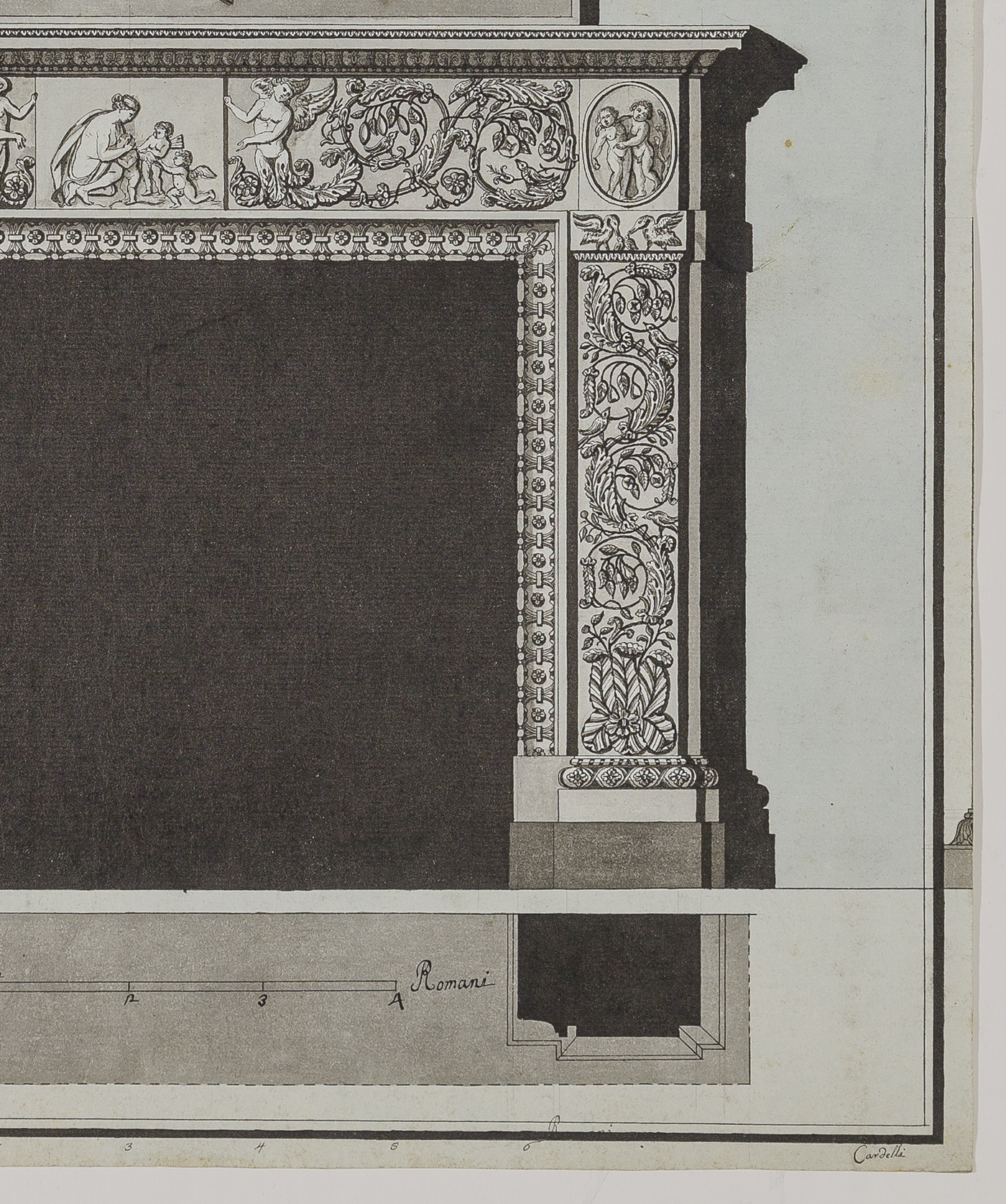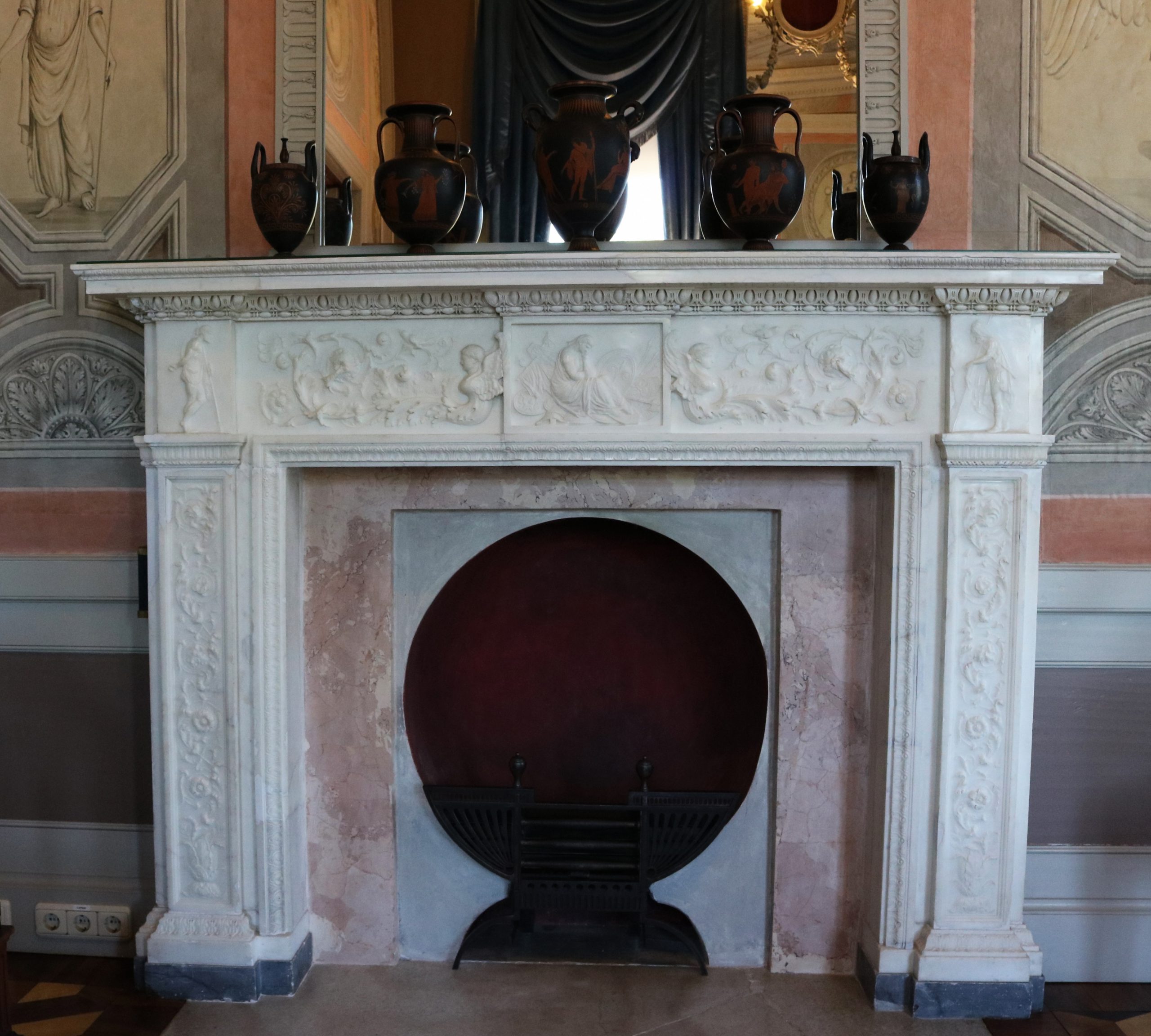LORENZO CARDELLI (Rome 1733 – 1794 Rome)
Lorenzo Cardelli (Rome 1733 – 1794 Rome)
Three Designs for Chimneys
Pen and black ink, grey and blue wash, double black ink framing lines, one sheet partial watermark Van der Ley and lily above a shield; 412 x 456 mm (16.2 x 18 inch); 414 x 417 mm (16.3 x 16.4 inch) and 294 x 441 mm (11.6 x 17.4 inch)
Each signed ‘Cardelli’ (lower right), and inscribed ‘Palmi Romani’, and identified with numbers ‘M’, ‘L’, ‘Q’ and ‘M’ (pen and brown ink)
Provenance
Private collection, The Netherlands
***
Lorenzo Cardelli was the leading decorative sculptor of his day. Born in the Eternal City, he founded a celebrated marble workshop in the Via Condotti, where he restored Classical antiquities and produced ornamental carvings.1 Lorenzo’s sons Giuseppe (1769–1822), Salvatore und Pietro (1776–1822) were also active in the studio; Giuseppe would later also take up architecture. The young Antonio Canova (1757–1822), whose workshop was next door to that of Lorenzo Cardelli, favourably commented on Cardelli’s fireplaces, porphyry and hardstone work, when visiting his workshop in November 1779.2 Royal and aristocratic commissions at the time promoted the association and collaboration with fellow celebrated craftsmen like Luigi Valadier , Carlo Albacini and the mosaicists Cesare Aguatti and Giacomo Raffaelli. In 1775, Cardelli was commissioned by Prince Marcantonio Borghese to supply chimneypieces to the Palazzo Borghese in Rome, where he collaborated with amongst others, Luigi Valadier.
During the late eighteenth century, the Italian neoclassical taste and design occasioned Rome to become the production centre for fireplaces for the wealthiest members of the European aristocracy. A number of recorded chimneypieces in both Italy and in country houses around Britain were supplied by Cardelli, often to travellers who had embarked on the Grand Tour. A chimneypiece purchased directly from Cardelli in 1771 by the Collector Thomas Mansel Talbot survives at Penrice Castle.3 Other chimneypieces by Cardelli can be found in the Queen’s ante-chamber at the Palazzo Pitti, with another in the Quirinale.4
Surviving designs and presentation drawings by Cardelli are exceptionally rare. A marble chimney by Cardelli which is comparable in design to the drawings shown here was bought in Rome by Friedrich Wilhelm von Erdmansdorff (1736–1800) for King Friedrich Wilhelm II of Prussia (1744–1797) (fig.).5
SOLD TO THE RIJKSMUSEUM, AMSTERDAM
1. For Cardelli, see Paolo Venturoli, ‘Cardelli, Lorenzo’, in: Dizionario biografico degli italiani Treccani, vol. 19, Rome 1976.
2. Alvar González-Palacios, Il gusto dei principi, Milan 1993, pp. 245-46.
3. John Cornforth ‘Penrice Castle, Glamorgan II’, Country Life, 25 September 1975, figs. 2 and 4, illustrated in situ in the Drawing Room.
4. Alvar González-Palacios, Il Tempio Del Gusto, Il Granducato di Toscana e Gli Stati Settentrionali, Le arti decorative in italia fra classiccismi e barocco, vol. I and II, Milan 1986, no. 425, p.194 and pp. 220, 221.
5. Marble, 147.3 x 196.5 x 28.5 cm; Stiftung Preussische Schlösser und Gärten Berlin-Brandenburg, Skulpt. Slg. Inv. no. 6132, see: Friedrich Wilhelm II. und die Künste. Preußens Weg zum Klassizismus, exh. cat. Potsdam 1997.
